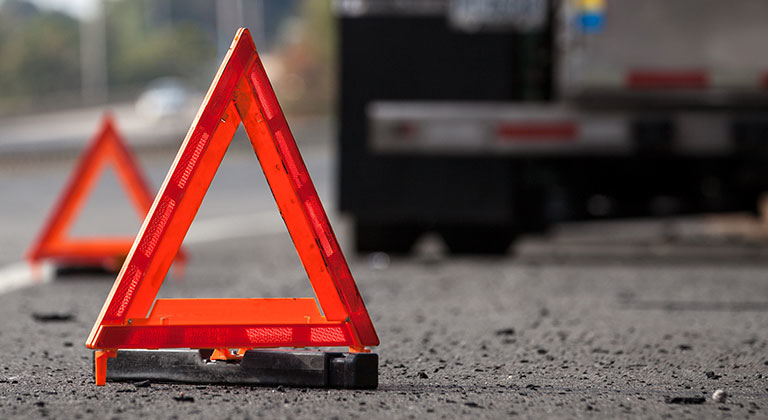Driver conduct at accidents
What to do if you’re in an accident
You hope it doesn’t happen, but accidents are a common risk for any business that requires driving to deliver its goods or services. If one happens, there are things your drivers can and should do. A big part of it is behavior.
At the scene of an accident, remember to be polite and courteous. Admit nothing, promise nothing, and don’t argue. Don’t discuss the accident with anyone except the police and representatives from your own company. Any statements you make may later be used against you—so don’t offer any theories, reasons, or excuses as to why the accident happened.
Here are more guidelines to keep in mind:
Stop: Wait at the scene of an accident in which you are involved. Not stopping is a criminal offense.
Protect the scene: Turn on your 4-way flasher. Set out emergency reflectors to warn approaching traffic.*
Assist the injured: If you’re trained, provide first aid where needed.
Don’t move the injured unless it is absolutely necessary to prevent further injury.
To reduce shock, keep those hurt warm and quiet.
Wait for emergency personnel to treat and transport anyone who’s hurt.
Notify the police: Let them know the location and any apparent injuries or fire hazards at the scene.
Notify your company: Let your company or dispatch know about the accident and any probable delays in delivery.
Get and record all the facts: Use the accident report kit in your vehicle to record these details:
Names, addresses, and phone numbers of witnesses
Information from anyone else involved in the accident, including insurance information and passenger names and addresses—even if the accident appears to be minor or without damage
Take photos: If you have a camera or cell phone and it's safe to do so:
Take photos of the damage to other vehicles or property from several angles
Get shots of the roadway or signs that may have contributed to the accident
If witnesses don’t want to get involved, take pictures of their license plates so they can be identified and contacted
Protect any cargo and equipment: Avoid leaving your cargo and equipment unattended except in extreme emergencies.
By understanding and following these guidelines, you’ll help limit your liability and create a smooth claims process.
For more information on accident scene conduct or other safety topics, talk to your Sentry agent or regional Sentry Safety consultant.
*One approximately 10 feet from the vehicle in the direction of approaching traffic. One approximately 100 feet from the vehicle in the center of the traffic lane or shoulder occupied by the truck in the direction of approaching traffic. One approximately 100 feet from the vehicle in the center of the traffic lane or shoulder occupied by the truck in the direction away from approaching traffic. See Department of Transportation Regulation 392.22 for further details.
Related resources
Key person insurance
Your top people are some of your top assets. What if you were to lose one of them? Help protect your business with key person insurance.
Glossary of investment terms
Understand your investments by reviewing some common terms.






